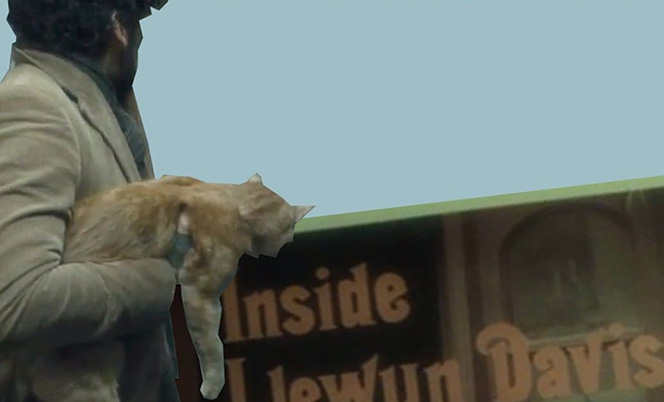
- Industry
Inside Llewyn Davis – The Irish Roots of American Folk Music
It’s difficult to imagine a time when Bob Dylan did not exist as a musician, much less when he did not dominate the New York folk scene, as hinted at so exquisitely at the ending of the Coen Brothers’ Inside Llewyn Davis. But the fact is that before Dylan became famous and swept all before him, including Dave Van Ronk, he was a huge fan of the Irish folk group the Clancy Brothers, who also did things on their own terms with a huge degree of success. “All the great performers I’ve seen all had one thing in common, they had something in their eyes that said, I know something you don’t. I wanted to be one of those performers.” These are the words Bob Dylan used in a recent documentary on the brothers as he reflected on the key folk musicians who had influenced him as he came up in New York in the late 1960s. Dylan and the Clancys went on to become very close personal friends, and despite their considerable differences in both sartorial and musical styles – the Clancys favored wholesome, white Aran sweaters when they went on stage, the very antithesis of cool – they sang both rowdy ballads and sentimental folk tunes. Dylan met the brothers in Greenwich Village, when Liam Clancy and Bob began dating a pair of sisters. Despite their very different backgrounds of Irish Catholicism and Jewish Midwestern roots, they shared an important quality: “People who were trying to escape repressed backgrounds, like mine and Bob Dylan’s, were congregating in Greenwich Village,” said Liam Clancy, before he died in 2009. “It was a place where you could get away from the directives of the people who went before you, people who loved you but who you knew had blinkers on.” But the Greenwich Village of today is nothing like the place it was when Llewyn Davis was trying to eke out a living. It was still a somewhat dark time for folk music, despite the devoted coterie of true believers who flocked to the clubs there. It was a more intimate, less certain place. But as a testing ground for emerging artists, there was also some tension and rivalry among many different groups, including the beats and jazz lovers. As Van Ronk wrote in his memoir “The Mayor of MacDougal Street,” “We knew about the Kingston Trio and Harry Belafonte and their hordes of squeaky-clean imitators, but we felt like it was a different world that had nothing to do with us. The beats liked cool jazz and bebop and hard drugs and hated folk music, which to them was fresh faced kids sitting around on the floor singing songs of the oppressed masses. When a folk singer would take to the stage between two beat poets, all the finger-poppin’ mamas and papas would do everything but hold their noses. When the beat poets would get up and rant, the folk fans would all do likewise.” Bob Dylan described Liam Clancy as “profound, with no fear, no envy and no meanness. The Clancys sang rousing rebel songs that were Napoleonic in scale. Liam Clancy was quite simply the best ballad singer I ever heard in my life.” In Inside Llewyn Davis, Mumford and Sons convincingly don the Aran sweaters, to reprise songs which would have been familiar to the Clancys and indeed to Dylan in look and in sound. Brendan Behan’s classic prison song “The Auld Triangle” also gets a very respectable and rousing interpretation in this movie, which even the strictest purist would have difficulty disliking. Justin Timberlake adds backing vocals to this version sung by Marcus Mumford, Chris Thile and Chris Elridge. In a recent interview with the HFPA, Timberlake admitted he was well aware and influenced by the work of the Clancy Brothers and their musical legacy in the American folk tradition. “American folk music owes the Clancys a major debt for their seminal influence at a hugely important time for its evolution. I’m a big fan,” he said.
Patricia Danaher

